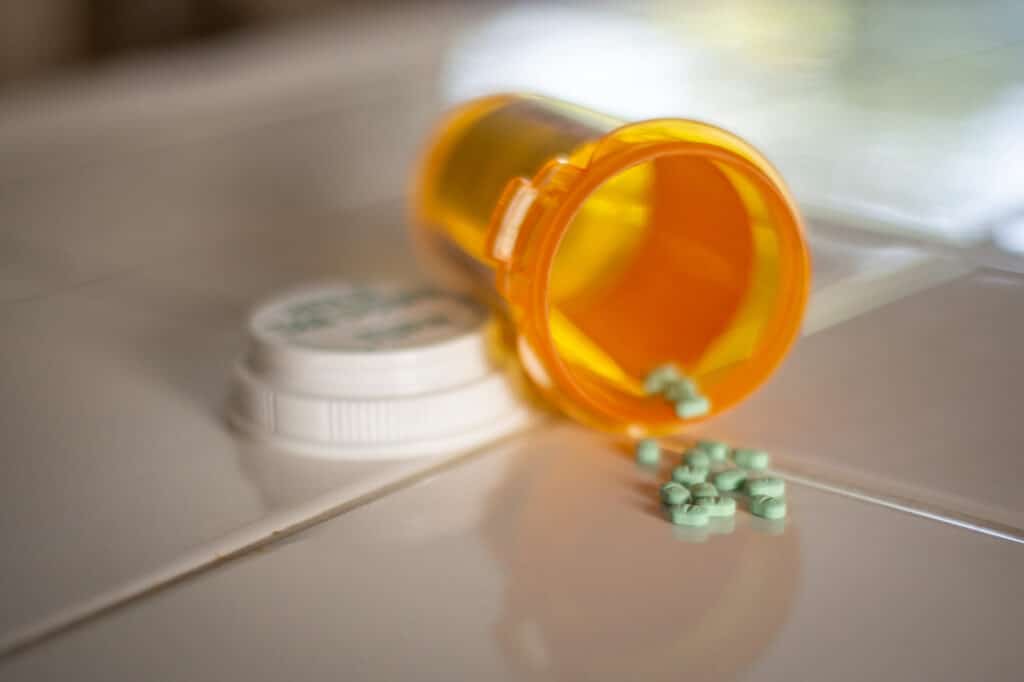
The Role of Tramadol in the Opioid Epidemic
Physicians began to prescribe opioids for their patients on a much more frequent basis in the 1990s, and this led to an increase in deaths due to semi-synthetic opioids and natural opioids. These deaths began to increase in about 1999. Examples of semi-synthetic opioids include oxymorphone, hydromorphone, hydrocodone, and oxycodone. Natural opioids include codeine and morphine.
Approximately 10 years later, opioid overdose deaths began to increase again, but this time, they were mainly attributed to heroin.
Beginning in 2013, the third outbreak started with synthetic opioids as the main culprit. Fentanyl, which was created in this way, was the main type of opioid being ingested at this time. Illicitly made fentanyl is being paired with cocaine, counterfeit pills, and heroin on an increasing basis.
Death rates involving synthetic opioids other than methadone increased by 15% over the past 10 years. Deaths involving all opioids also increased by more than 6%. Since 1999, overdose deaths have quadrupled.
Tramadol Enters the Market
Tramadol is another synthetic opioid that the FDA approved for marketing in 1995. Physicians could prescribe Tramadol for their patients for the treatment of moderate to moderately severe pain. Not long after, it became clear that some people were abusing this substance. Tramadol is now classified under Schedule IV of the Schedule for Controlled Substances Act.
Drugs under Schedule IV have a low potential for being abused compared to benzphetamine and ketamine, but Tramadol is still considered a controlled substance.
How Does Tramadol Work?
Tramadol is an opioid agonist. An agonist is a substance that activates receptors in the brain. If a substance is a full agonist, it activates the brain’s receptors so that they result in the full opioid effect. Besides Tramadol, full agonists include opium, morphine, hydrocodone, methadone, oxycodone, and heroin.
When a person ingests Tramadol, his or her brain will begin to sense the pain in a different manner. For example, endorphins bind to the brain’s receptors, and Tramadol is something like these endorphins. After the endorphins bind to the receptors, the receptors reduce the number of pain messages that they send throughout the body. This is similar to the way that Tramadol works in the brain as it sends a reduced number of pain signals to the body.
Endogenous opioid neurotransmitters include endorphins and enkephalins, and they work to help people cope with pain, stress, and exertion. Tramadol may also increase the amount of serotonin and norepinephrine. Serotonin’s job is to stabilize your moods, and a person with too much norepinephrine may experience anxiety.
Drugs That Suppress the Central Nervous System
Tramadol is a drug that suppresses the central nervous system. Drugs such as these slow down the brain’s activity so that the person can feel more relaxed. Other opioid drugs also exist under this classification, and they reduce the neurons’ abilities to fire.
Although Tramadol was initially seen as the answer to the opioid crisis, it turned out to be addictive as well. Even so, Tramadol is considered to be a safer drug than heroin and similarly strong opioids.
Opioid Prescription Rates
Although prescriptions for opioids have gone down over the years, they remain very high. The number of opioid prescriptions in 2015 is actually three times higher than the number of opioid prescriptions from 1999. Unfortunately, many of the people receiving opioid prescriptions and experiencing a substance use disorder are also consuming alcohol, which can have negative effects.
Alcohol
More people were abusing alcohol than any other substance in the United States in 2019. Approximately 14.5 million people reported that they had an alcohol use disorder.
Adults aren’t the only ones experiencing troubles with alcohol. Approximately 414,000 kids from age 12 to age 17 also reported having an alcohol use disorder in 2019. Females outnumber the males in this demographic with 163,000 boys and 251,000 girls stating that they have an alcohol use disorder.
Like opioids, alcohol also suppresses the central nervous system, but the neurotransmitters that alcohol works on are different. The result may be that the alcohol changes the person’s moods and behavior. It may also result in the loss of self-control. When people drink, they may begin to experience memory issues, and they may have trouble thinking clearly.
What Happens When You Mix Tramadol and Alcohol?
The medical community warns people taking Tramadol that they will experience harmful side effects if they consume alcohol with the medication. Tramadol is a safe drug for people to take, but it is never safe to combine it with alcohol.
People should not think they are safe to mix Tramadol and alcohol if they only take a low dose of Tramadol and a small amount of alcohol. It doesn’t matter how small the doses are because this combination can result in life-threatening effects. Tramadol already causes several side effects, and if a person also drinks alcohol, the likelihood of experiencing those effects increases.
Side effects associated with Tramadol include:
- Dry mouth
- Heartburn or indigestion
- Changes in mood
- Tightness in the muscles
- Uncontrollable shaking
- Nervousness
- Headache
- Insomnia or waking up throughout the night
- Sleepiness
Severe Side Effects
- Loss of consciousness
- Changes in one’s heartbeat
- Decreased sexual desire
- Irregular menstruation
- Erectile dysfunction
- Dizziness, weakness, loss of appetite, vomiting, and nausea
- Diarrhea, loss of coordination, severe muscle stiffness or twitching, shivering, rapid heartbeat, confusion, sweating, fever, hallucinations, and agitation
- Hoarseness
- Swelling in the lower legs, ankles, feet, hands, lips, tongue, throat, face, and eyes
- Troubles breathing or swallowing
- Blisters, rash or hives
- Seizures
These serious side effects require immediate medical attention.
Enhanced Reactions to Both Drugs
Several dangerous things can occur when people mix Tramadol and alcohol. Tramadol and alcohol are both central nervous system depressants, so they work together to create these effects. Therefore, if you take these substances together, the effects of each one will increase significantly. Some of the symptoms include a more intense feeling of relaxation, a sense of well-being, and euphoria. This can occur even if you are taking the drugs at low doses.
When you take Tramadol, your central nervous system depresses so that your heart rate, blood pressure, and respiration also suppress. That’s because Tramadol causes the brain stem’s neurons to fire at a slower rate. This is the same reaction that alcohol causes, so when the two substances are combined, they work together to suppress the firing of the body’s neurons. This can also lead to slowing of the person’s breathing, blood pressure, and heart rate, which can be very dangerous.
If you take large doses of Tramadol and alcohol, they can cause the neurons to stop firing altogether, and you could end up in a coma. When this occurs, you may stop breathing and possibly die.
The Danger of Overdose
When people combine Tramadol and alcohol, they also increase their chances of experiencing an overdose. Tramadol and alcohol both cause side effects, and combining these two substances enhances these side effects. This means that a person can experience an overdose because of one or the other substance.
Chronic Diseases
Taking Tramadol and drinking alcohol is a combination that can lead to several chronic diseases. These chronic diseases include kidney issues, neurological damage, stroke, arteriosclerosis, ulcers, cirrhosis of the liver, and several types of cancer.
Accidents
When people are drinking alcohol and using Tramadol together, it only takes one time for them to exercise poor judgment. This population is also at a high risk of being the victim of a violent crime.
If women combine Tramadol and alcohol, their babies are at risk of being born with a developmental disorder. Men can experience sexual dysfunction when they indulge in Tramadol and alcohol.
Dual Diagnosis
When people are diagnosed with a substance use disorder, they often receive a diagnosis of a mental health disorder. If someone has a mental health disorder, they often choose a drug that “medicates” the problem and then develop a substance use disorder. In fact, approximately 50% of people diagnosed with a mental health disorder will receive a substance use disorder diagnosis and vice versa.
The most common mental illnesses are anxiety disorders, which include post-traumatic stress disorder (PTSD), panic disorder, and generalized anxiety disorder. Other commonly co-occurring disorders with substance use disorders include antisocial personality disorder, borderline personality disorder, psychotic illness, attention-deficit hyperactivity disorder (ADHD), bipolar disorder, and depression.
The people most likely to use more than one substance at a time are more likely to be diagnosed with a mental health disorder as well as a substance use disorder.
Granite Recovery Centers
Substance use disorders used to be the only ailments treated at drug treatment centers, and psychiatric disorders were treated exclusively at psychiatric hospitals and clinics. The medical community learned that this is not the best approach to take when a patient has both a mental health condition and a substance use disorder. When medical professionals were treating the substance use disorder, they were not treating the mental health condition that may have been the underlying cause of the substance use.
At Granite Recovery Centers, we have a dual diagnosis program in which we address your substance use issue and your mental health disorder at the same time. After you have completed the drug detox program, we will place you in therapy for treatment. This may include dialectical behavioral therapy (DBT), cognitive behavioral therapy, trauma therapy, holistic addiction therapy, and 12-step support groups. Granite Recovery Centers provides medical detoxification for people who do not need immediate medical intervention, are not a danger to themselves, and are capable of self-evacuation in the event of an emergency.
If you or a loved one is having difficulties with an addiction to Tramadol and alcohol, we want to help. Contact us at Granite Recovery Centers so that we can put you on the road to sobriety once again.

















